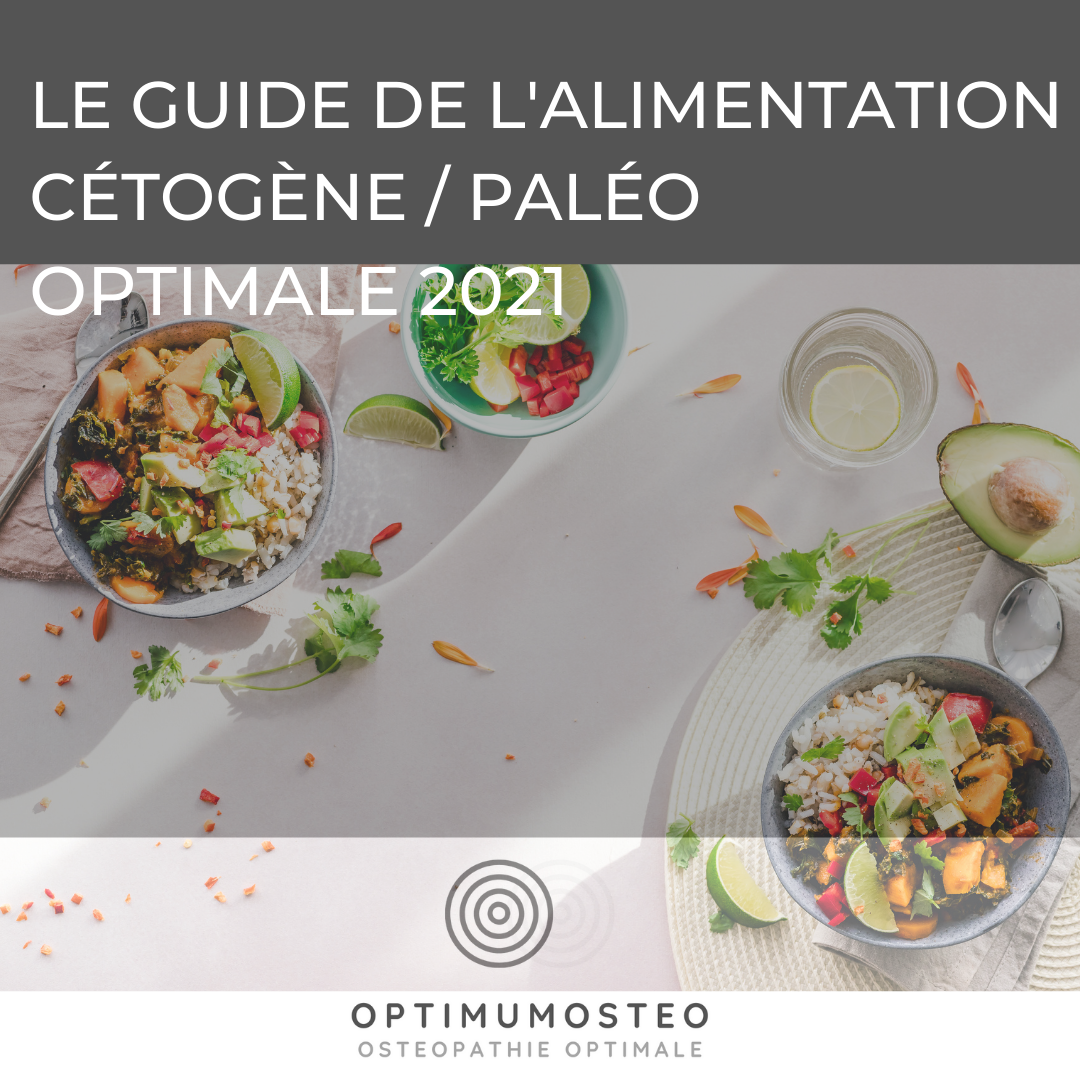How to optimize your ketogenic/paleo diet in 2021
Eating paleo or ketogenic and eliminating sugars and carbohydrates is not simply adding cream to your coffee and drinking directly from the highest fat coconut milk. It’s easy to fall into a completely unbalanced ketogenic diet full of animal matter that weighs down the system, forget to eat fiber and green leaves or stuff yourself with rancid polyunsaturated fats full of Omega-6 that will boost the body’s inflammation.
Here I give you my optimal version of a paleo-ketogenic anti-inflammatory diet, without lectins, which will bring you a beneficial dose of energy and focus on a daily basis, in addition to limiting the damage caused by a diet rich in carbohydrates and sugar.
It is usually ideal for those who want to get out of the “up and downs” of glycemic fluctuations and energy collapse in the afternoon after a carbohydrate-rich lunch. My experience is that is helped me to reduce inflammation in the body and recovering more quickly and completely from a concussion, and rebalance my digestion, I offer you some inspiration to reach your goal with an optimal ketogenic/paleo diet in 2021.
The Basics – Cyclic Ketogenic Nutrition
Ketones (those units of fat that the mitochondria will use in a ketogenic/paleo diet that produce anti-inflammatory compounds, as opposed to glucose), begin to be produced in the bloodstream from about the 12th hour of fast. So, after a night’s sleep, from the 12th hour of the last meal of the night before, the body begins to regulate itself and begins to produce ketones for energy, ATP.
So in a cyclic ketogenic diet, the goal is to stay in production of fat units all the rest of the day, until the evening meal, where the glycogen reserves in the muscles and liver can be renewed by the arrival of healthy carbohydrates.
Of course, it’s not just about consuming fat and protein. And it’s a mistake that many people who are enthusiastic about eating paleo are making, but fiber from plants must make up a large portion of what’s on the plate, or in the blender, to allow for optimal digestion and to nourish good bacteria.
The good fats
Proteins, vegetables and fats, they say. What are the good fats to eat? Some genetics from Nordic countries use saturated fats better than others, from Mediterranean countries who will prefer polyunsaturated fats. Unless you do a genetic test on the subject, a combination of fats that is reasonable in saturated fat seems balanced.
– Bone broths (always use pasture-raised carcasses or free-range chickens)
– Organic dairy products, from grass-fed cows, or goats, (for those who do not have intolerance or chronic diseases and are already healthy enough without digestive problems).
– Yogurts
– Eggs
– Coconut (cream, coconut butter, unsweetened milk, yogurt)
– Cocoa Butter (to be added in drinks, coffee, golden mylk etc.)
– Lawyer
– Olive oil + olives
– Omega-3 fish oils rich in DHA. As the trophic brand
– Vegetable DHA oil of golden algae
– TCM Oil (slightly increasing ketones in the blood when taken on an empty stomach)
– Soaked nuts and seeds (only a handful a day)
– Flax seed, hemp seed, chia
Proteins, I’m eating
And the debate always comes back to eating meat or not? To choose the egg or the chicken? To choose the chicken, and animal meat, it is essential to be aligned with our values of limiting animal cruelty and making consumption choices that encourage small farmers, who take care of their animals, so that they can graze as much as possible in the wild – if being in an enclosure, however large, can be called freedom. Without pesticides, without hormones and antibiotics of course.
Fix the carbon with grass fed beef?
Although the subject of climate change gives us the impression that methane emissions from the largest edible mammals is a step backwards for the fate of the environment, the practice of grazing cattle rather fixes more carbon than it emits! Isn’t that surprising? According to recent studies done on grass-fed and grass-finished beef producers, it has been shown that throughout the production chain, more carbon is fixed by the natural renewal and replenishment of the soil, which balances methane emissions and even more. This is because the natural poop from herbivores enriches the soil with micro-bacteria that stimulate the growth of new plants and thus fix carbon. In a natural environment, it is the predators that regulate the herd of herbivores and prevent the desertification of the soil. In the case of a herder, it is through the rotation of pastures. The desertification of the soil by excessive and chemical-filled agriculture can be renewed by the presence of these large nomadic herbivores, and by conscious caring of these cattle. [1] Tests have been made in East Africa in areas ravaged by desertification and the results of vegetation regrowth are impressive by these nomadic grazing methods, as it was done in ancestral times.
On the health side, of course, followers of the paleo diet of prehistoric humans will tell you that meat is necessary for human survival and fans of vegan or Buddhism will tell you that it is better not to kill animals. From my point of view and experience, and to make a short story, the consciousness of the more evolved mammals on the food chain experiencing “difficult” emotions at the time of going to the slaughterhouse can be crystallized and stored in the tissues, and some more sensitive people may be more affected by its digestion, especially that of red meat. This is why in oriental traditions, for followers of spiritual disciplines, in order to lighten and open their consciousness to less physical realities, eating animals was contraindicated.
Heavier for the conscience, red meat is forbidden in Ayurveda for certain castes traditionally and meat is not part of an optimal satvique yogic diet. But bone broth, yes, even for vegetarians. Bone broth is so rich in quality fat that it is essential for a vegetarian diet, since in theory the animal can already be dead to take its bones and marrow with high nutritional value.
When it comes to reversing chronic inflammatory diseases, it is really relevant for vegetarians to requestion themselves to incorporate animal fats, enough assimilable proteins and to leave grains, lectins and legumes aside until they regain their balance. So, with great gratitude, saying thank you to this exchange with the animals that allows us to strengthen and move forward on the road to healing. In a context where the climate is really hot, as in Hawaii for example, perhaps we can adopt a ketogenic diet that is more vegan, but I don’t have the experience on the long run.
In any case, the important thing is not to overindulge in meat and to carefully observe whether eating it weighs down our consciousness, our emotions, our morale, or strengthens and solidifies our body. We certainly live in an era where the project of getting human beings to become vegetarian while maintaining an strong constitution – for even the Dalai Lama’s doctors have recommended him to eat meat in recent years – is a superb, plausible and relevant attempt to raise planetary consciousness in unison. However, we should not put ideologies first if the animal body requires something else and time will lead evolution at its pace.
Adding a good amount of vegetable protein is an excellent support to have an appropriate daily amount of protein to support healing, immune system strengthening, body repair etc. Excellent health and sports specialists such as author and speaker Ben Greenfield recommends 0.55 to – 0.8 grams of protein per pound of weight depending on age and exercise. Above 50-55 years of age, with the unfortunate process of loss of muscle mass, it is better to raise these figures to more towards 1g per pound, especially to gain muscle mass. In cases of cancer, of course, it’s a different story because we don’t want to introduce too much protein into the diet.
My list of animal proteins
– Free range chicken and poultry.
– Warm-blooded grass-fed or wild mammals, in winter, on occasion, such as bison, beef and wild meat. I try to avoid lamb to avoid killing young sheep, and I avoid ducks that are usually not raised under conditions that respect animals.
– Wild fish only, only occasionally to avoid heavy metals.
Farmed salmon is usually pretty contaminated and toxic, read my blog about it here! I always prefer to take some clay or chlorella at the same time to bind the metals so they don’t infiltrate my system.
– Occasional seafood
– Eggs
– Chicken broth protein from Ancient Nutrition.
My list of proteins from the plant world
– Soaked nuts, especially almonds, really satvic and super well assimilated by the body.
– Hemp, flax and Chia seeds
– Hemp protein
– Rice Protein, in the evening
– Pumpkin seed protein super rich in iron, zinc etc.
– Moringa leaf powder, my superfood of the moment, containing the 20 amino acids needed to create proteins.
The 8 essential amino acids as supplement
– I use the amino acids from BodyHealth, a great brand, and you can use the code OPTIMUMOSTEO for 10% discount on all your orders.
For more information, check out my blog on the 8 essential amino acids by clicking here. Between 5 to 25 grams per day. The equivalent of 15 to 75 grams of protein.
Plants, green leaves and superfoods
In the plant world, green leaves are full of nutrients for the human being that we are. Green salads, green smoothies, green soups, powdered, juices, all ways are good to incorporate a lot of green in our daily diet. Root vegetables and squash in the evening, as our ancestors of the tribal world lived in the past and still today, in the indigenous traditions. It’s all about having enough fiber, but also vitamins, minerals, antioxidants, phytonutrients, energy from the sun, melanin, enzymes, and probably much more.
The best known superfoods to optimize the intake of vitamins and minerals are now essential to consume on a daily basis – as soils are depleted by denatured agriculture. Here is a list of what I like to add to my daily menu.
– Spirulina: superprotein, rich and alkaline.
– Chlorella: Heavy metal chelator par excellence
– Moringa Powder: one of the richest plants for everything you need
– Powder of grass juice: wheat grass, barley, oats. Hyper nutritive and detoxifying
– Mix of green superfoods: There are many but I like Naturelo’s or Botanica’s, with kale, spinach, herbal juices, probiotics, adaptogenic plants and more!
Probiotics, on me and me in
We all now know that health is directly proportional to the strength of the microbiota in a population and in an individual. There are more bacteria, 3 times more, than there are cells of our own body in and on us. And even more viruses, by the way. The inhabitants of an urban ecosystem have a strong reduction in the diversity of their microbiota compared to the inhabitants of the countryside and even more so to indigenous peoples living in contact with nature.
The resistance and adaptation of a strong immune system begins early in life with vaginal delivery, which allows the mother’s secretions to inoculate the child’s microbiota. The most advanced doctors on the subject who perform caesarean sections take the time to line the child with the mother’s vaginal secretions when they take the newborn baby out.
The generalized aseptization and the modern deviance of hyper-cleanliness contribute to the reduction of microbial diversity beneficial to humans. Stemming from the erroneous postulates of Louis Pasteur and taken up by the pharmaceutical industry in order to push the fear of germs and the protection of bacteria and viruses by medication, allopathic medicine of the last decades follows the same discourse. However, we know, and this from Lavoisier’s postulates, that it is the resilience of the soil, the body and the immune system that is the key to health, and hence the importance of cultivating a healthy microbiota.
A few tips from specialist, Dr. Zach Bush, MD:
– Being in nature, playing in the garden, putting your feet in the ground, rolling around in the grass…
– Being in contact with animals
– Being in contact with children, who usually do more than we do the first two strategies.
– Travelling
– Swimming in lakes, rivers, the sea
– Use natural cleaning products
– Don’t over-wash your food, such as root vegetables, nor your hands
– Eat fermented products such as yogurt, sauerkraut, cheese, kimchi, kefir, etc.
Intermittent Fasting
Every day, or almost every day. With amino acids in the morning, and a creamy hot drink adding MCT oil, cocoa butter and or coconut oil.
The body gets used to it and it becomes easier and easier to spend long periods of time without food with the change of metabolism and the adaptation to burn and use the fat units. It always good to aim for 14 to 18 hours, knowing that women should probably be on the lower side of this range.
One of the first and most important tricks to activate and transform our metabolism to fuel on fat is not to eat at least 3 hours before going to sleep in the evening, or never after 8pm, in order to start the fasting period and leave space for the digestive tract to rest at night.
Adaptogenic plants and caffeine?
I’m more of a proponent of minimizing caffeine on a daily basis. Despite the well-known positive effects of caffeine, especially in dilating the arteries and increasing blood circulation, the exacerbation of the adrenal glands is noticeable and I see it most of the time with my clients in my practice of Osteopathy in Montreal.
Perhaps at a time when stress levels were much lower, when people were in contact with the soil and pollution – air, electromagnetic, soil, water and food – was absent, perhaps then the caffeine in tea, among other things, was justified. But today’s urban and stressful living conditions are not balancing to the use of caffeine to increase productivity or attention. Caffeine constantly demands the production of cortisol by the adrenal glands, often excessively contracted due to a lack of relaxation, which induces not only premature aging but also health risks in terms of general inflammation of the body.
In general, it is enough to stick to a carbohydrate-free and sugar-free diet so that energy becomes constant throughout the day and attention to our work is sharpened.
For the taste, simply drink organic decaf, full of antioxidant too.
And to replace tea, I use Jiaogulan, or gynomstemma, a plant in the ginseng family that provides a sharpness of focus reminiscent of that provided by tea.
I generally recommend the use of adaptogenic plants to regenerate the adrenal glands such as :
– Sacred Basil
– Rhodiola
– Ashwagandha
– Reishi and medicinal Mushrooms
And to stimulate and give an extra boost of energy :
– Gynomstemma
– Siberian ginseng or panax, depending on age.
Here is my most concise summary to inspire you in your optimal ketogenic/paleo cyclic diet for the year 2021. Leave me your comments or questions if you have any at the bottom of the page.
I will write some examples of what I eat in my days with meals and drinks in my next article!
Login to my Instagram optimum_osteo account to follow the thread and stay in touch!
[1] [1] https://sustainabledish.com/its-not-the-cow-its-the-how-new-study-shows-grass-fed-beef-can-be-a-carbon-sink/

Janeck Olczyk,
Ostéopathe – Santé Holistique
Osteopath – Holistic Health
OptimumOsteo Montréal

